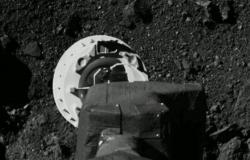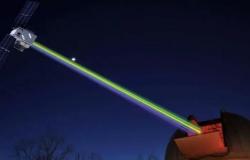Two NASA astronauts, Tracy C. Dyson and Matt Dominickwill carry out a spacewalk of about six hours outside the International Space Station (ISS) this Thursday.
The primary objective of this 90th spacewalk for the United States is to remove a faulty electronics box from a communications antenna on the starboard side of the station. In addition, the astronauts will collect samples to analyze “the ability of microorganisms to survive and reproduce outside the orbital laboratory,” according to the POT.
During the mission, astronauts will exit the Quest airlock. Tracy C. Dyson, who will be wearing a red-striped suit, is making her fourth spacewalk. On the other hand, for Matt Dominick, who will use a suit without markings, it will be his first experience on a spacewalk. Both astronauts have been on the ISS since March 2024. Dyson, on his third trip to space, and Dominick, as mission commander SpaceX Crew-8.
The live broadcast of the spacewalk can be followed not only through USA TODAYbut also through NASA+, NASA Televisionthe NASA app, Youtube and the space agency’s website. Once the walk is completed, NASA will announce the names of the astronauts who will participate in future spacewalks number ninety-one and ninety-second, scheduled for June 24 and July 2, respectively.
The mission receives additional support from the ship’s astronauts Boeing Starliner, Suni Williams and Butch Wilmore. Both extended their stay on the ISS to collaborate with the spacewalk, as detailed by NASA. They originally planned to stay only a week, but are now scheduled to return to Earth no earlier than Tuesday, June 18.
For Tracy C. Dyson and Matt Dominick, this mission is crucial not only for the immediate tasks they will perform, but also for the collection of data that will allow us to better understand microbial life in space. This type of research is vital for future long-duration missions and possible human settlements outside Earth.
“The ability of microorganisms to survive outside the ISS may offer valuable knowledge for future space colonization,” NASA highlighted in its statement.. Experience and coordination will be essential, especially in maneuvers that involve handling delicate equipment and collecting samples in extreme conditions.
For those interested in following these events closely, NASA has provided multiple access platforms. This democratization of science and technology is an opportunity for citizens to better understand the complexities and challenges that astronauts face in their missions in space.
In summary, the six-hour spacewalk that Dyson and Dominick will carry out not only meets immediate maintenance and data collection objectives, but also constitutes another step in the continued expansion of human knowledge in the space realm.






